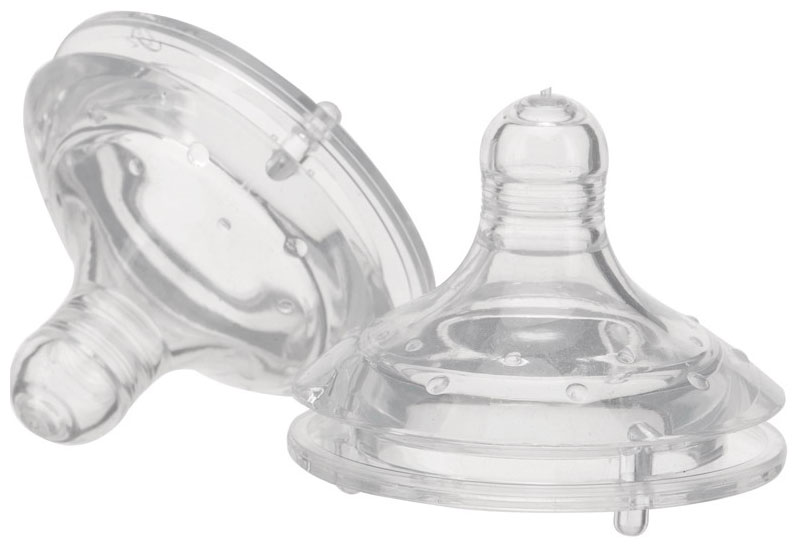
Baby bottle nipples play a critical role in infant feeding by ensuring the flow of milk or formula to the baby. Understanding the science behind these nipples, including flow rate and materials, is important for parents to ensure their baby's comfort and proper feeding.
Flow Rate: Flow rate refers to the speed at which milk flows from the nipple from the bottle into the baby's mouth. Different flow rates suit babies of different ages and feeding abilities. Typically, baby bottle nipples come in a variety of flow rates, ranging from slow to fast.
-
Slow Flow Nipples: These nipples have a smaller opening that allows for a slow and controlled flow of milk. They are suitable for newborns and young infants who are still learning to feed and have a weaker sucking reflex.
-
Medium flow nipples: Medium flow nipples have a slightly larger opening than slow flow nipples, allowing milk to flow faster. They are suitable for older babies who have developed stronger sucking reflexes and can handle a slightly faster flow of milk.
-
Fast Flow nipples: Fast flow nipples have the largest opening for fast milk expression. They are suitable for older babies who are feeding well and can handle faster pumping rates without choking or gagging.
It is important for parents to select the appropriate flow rate based on the baby's age, feeding ability, and comfort level. Using the wrong flow rate may result in feeding difficulties, excessive spitting, or discomfort for the baby.
Materials: Baby bottle nipples are typically made from silicone or latex, each of which has its own benefits and considerations.
-
Silicone pacifiers: Silicone pacifiers are durable, easy to clean, and resistant to odor and stains. They are also less likely to cause allergic reactions in sensitive children. Silicone nipples tend to retain their shape and elasticity over time, making them suitable for long-term use.
-
Latex Nipples: Latex nipples are softer and more flexible than silicone nipples, more closely mimicking the feel of a mother's breast. Some babies prefer the texture of latex nipples, especially if they have difficulty transitioning from breastfeeding to formula. However, latex pacifiers are more susceptible to wear and tear and may need to be replaced more frequently.
{thirty}
When choosing baby bottle nipples, parents should consider their baby's preferences, sensitivities or allergies, and the durability of the material.
In summary, understanding the science behind baby bottle nipples, including flow rates and materials, is essential to ensuring comfortable and successful feeding for babies. By selecting the appropriate feed speed and material based on their child's needs, parents can promote healthy eating habits and support their child's development.






